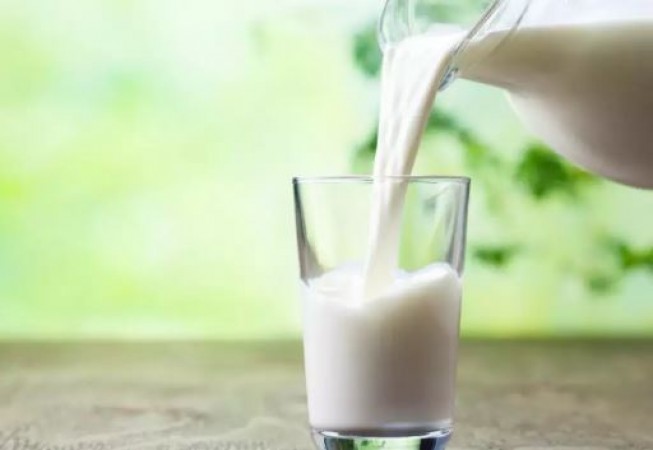
Calcium, an essential mineral for maintaining strong bones and overall health, plays a crucial role in various bodily functions. While milk is often the go-to source of calcium, it's important to recognize that there are several other dietary options available that can effectively combat calcium deficiency. This article delves into the diverse range of calcium-rich foods that can be included in one's diet to ensure optimal bone health and overall well-being.
Understanding Calcium Deficiency
Calcium deficiency, also known as hypocalcemia, occurs when the body doesn't receive an adequate amount of calcium from dietary sources or when calcium isn't absorbed properly. This deficiency can lead to weakened bones, brittle nails, muscle cramps, and a heightened risk of osteoporosis—a condition characterized by reduced bone density and increased susceptibility to fractures. While dairy products like milk are traditionally linked with calcium intake, there's a plethora of non-dairy alternatives to help meet the daily calcium requirements.
Exploring Non-Dairy Calcium Sources
Leafy Greens: Dark, leafy greens like kale, spinach, collard greens, and broccoli are exceptional sources of calcium. These vegetables offer the advantage of being rich in vitamins, minerals, and antioxidants, making them an excellent addition to a well-rounded diet.
Tofu and Tempeh: Soy-based products such as tofu and tempeh are versatile options that pack a significant amount of calcium. They are not only suitable for vegetarians and vegans but also offer additional protein, making them an excellent choice for overall nutritional balance.
Nuts and Seeds: Almonds, chia seeds, and sesame seeds are fantastic sources of calcium. Incorporating these into meals or consuming them as snacks can contribute to daily calcium intake while providing healthy fats and other essential nutrients.
Fortified Foods: Many plant-based milk alternatives—such as almond milk, soy milk, and oat milk—are fortified with calcium and other essential nutrients. Check the labels to ensure adequate fortification.
Legumes: Beans and lentils, besides being excellent sources of plant-based protein and dietary fiber, also contain notable amounts of calcium. Including these in various recipes can be a delicious way to increase calcium intake.
Seafood: Certain types of fish like sardines and salmon (with edible bones) are excellent natural sources of calcium. They also provide omega-3 fatty acids, contributing to heart health.
Fruits: Oranges and figs are among the fruits that contribute to calcium intake. Oranges are not only refreshing but also rich in vitamin C, which aids calcium absorption.
Balancing Calcium Absorption
While including a variety of calcium-rich foods in the diet is essential, it's equally important to consider factors that affect calcium absorption. Vitamin D, for instance, plays a pivotal role in calcium absorption and bone health. Exposure to sunlight and consuming vitamin D-rich foods like fatty fish, egg yolks, and fortified products can help optimize calcium absorption.
Phytates and oxalates, naturally occurring compounds in some plant-based foods, can inhibit calcium absorption. However, this doesn't necessarily mean these foods should be avoided; rather, it emphasizes the importance of consuming a diverse range of calcium sources to counteract potential absorption limitations.
Achieving Calcium Balance Through Diet
Creating a well-balanced diet that addresses calcium deficiency involves thoughtful meal planning and a focus on whole, nutrient-rich foods. Here's a sample meal plan that demonstrates how to incorporate various calcium sources into daily meals:
Day 1:
Breakfast: Oatmeal topped with almonds, chia seeds, and fresh berries.
Lunch: Tofu and vegetable stir-fry with broccoli, bell peppers, and snap peas.
Snack: Orange slices and a small handful of sesame seeds.
Dinner: Grilled salmon (with bones) served with a side of sautéed spinach.
Day 2:
Breakfast: Whole-grain toast with almond butter and sliced figs.
Lunch: Lentil soup with a side of mixed greens.
Snack: Greek yogurt with chopped nuts and a drizzle of honey.
Dinner: Chickpea and vegetable curry served with brown rice.
Day 3:
Breakfast: Smoothie with kale, banana, soy milk, and a spoonful of tahini.
Lunch: Black bean salad with diced tomatoes, avocado, and a sprinkle of nutritional yeast.
Snack: Carrot and celery sticks with hummus.
Dinner: Whole-wheat pasta with marinara sauce, sautéed spinach, and grilled tempeh.
Maintaining optimal calcium levels is essential for promoting strong bones, preventing fractures, and ensuring overall well-being. While milk is a traditional source of calcium, there's a vast array of non-dairy options available that are equally effective in combating calcium deficiency. Incorporating leafy greens, tofu, nuts, fortified foods, seafood, and other plant-based sources into your diet can create a diverse and nutritionally balanced approach to meeting calcium requirements. By understanding calcium absorption factors and designing a well-rounded diet, you can take proactive steps toward enhancing bone health and enjoying a vibrant, active lifestyle.
Fertilizers for Kharif Planting; States Urged to Counter Urea Diversions: Mandaviya
Health Benefits of Bhutta During Rainy Days: 8 Reasons to Enjoy Corn Daily